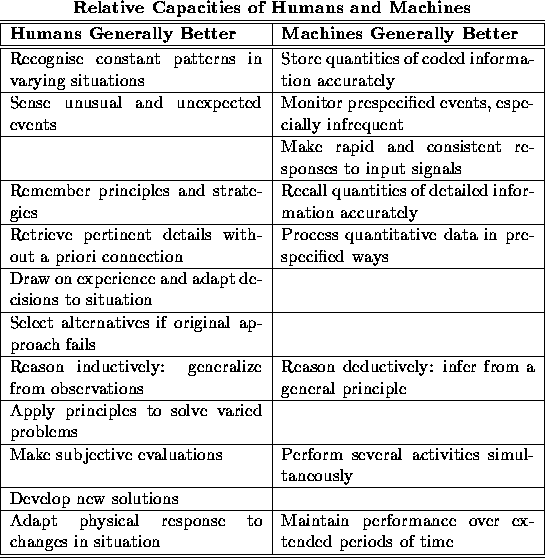




The most important design objective was to achieve the correct balance between automatic and user control during a search session, allowing users to concentrate on what they do best and the system to be used to best effect also. The table overleaf from Brown [7] describes the relative capabilities of humans and machines. In the specific case of information retrieval, the aim must be to promote users' ability to ``make subjective evaluations'' without hindering what the system does well, i.e. to ``process quantitative data in prespecified ways''.
Initial discussions about interface design were informed by a number of factors: experience from earlier research projects, knowledge about the potential users of the interface and their information-seeking tasks, an analysis of the processes of query formulation and searching which the interface must support, and the requirement for both formative and summative evaluations of the system. It was necessary to clarify to what extent the interface was to be ``configurable'', and --- given the limited time available --- to put some order of priority on the functions which it would be desirable to provide.
The previous Okapi projects had thrown up many issues which formed the starting point for discussions. For example, one of the first decisions was that the interface should use one main window with a number of subsidiary areas, rather than the overlapping windows which had not proved popular with users of XOkapi.

A more important decision concerned user versus system control over the query expansion process. The contrast between automatic and interactive expansion was presented earlier in section 1.4 --- for ENQUIRE it was decided to adopt an intermediate course and implement incremental expansion. Using this method, every positive relevance judgement made by the user triggered off a procedure which could result in a reweighting of the original query terms and / or the inclusion of new extracted terms. Such terms ``filter'' into the user's query if they reach a certain weight threshold. Users can remove extracted terms from their query whenever they wish and initiate an expanded search with those terms only when they think it appropriate. See section 2.3.3 for an account of the algorithm used for this process.



